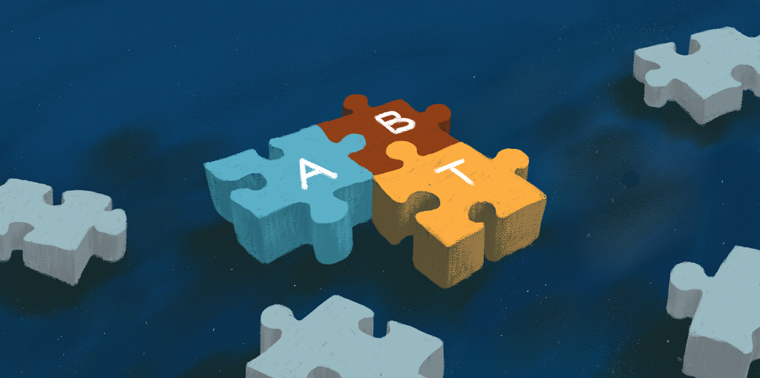July 18, 2018 — If a scientist makes an important discovery, yet the world never hears about it, was it ever really made?
Instances of scientists failing to communicate their discoveries go back centuries. Gregor Mendel, the founder of modern genetics, died with little fanfare in the late 1800s because few knew of his important research. It took more than a decade for his work to be “rediscovered” and catalyze the beginnings of the field of genetics.
In today’s world of nonstop information, the risk of research remaining obscure is greater than ever. One of the ironies of the computer era is that each innovation for better communication has simply led to more buzz and more difficulty being heard. This is a serious problem for science because in our increasingly-data driven world, science controls everything from Wall Street to baseball to elections. But if the ones with the knowledge of how things work — the scientists — can’t be heard, we might as well be back in the dark ages where everything was confusing and mystical.
And yet, when it comes to basic communication — one person speaking to another — the more things change, the more the basic dynamic remains the same. This is because our fundamental communication device — our brain — hasn’t changed.
And, But, Therefore
Neurophysiology research by Uri Hasson at Princeton University and others shows greater activity and synchrony between individuals when information has a narrative structure to it. They use functional MRI to examine individuals watching films that have no narrative structure (video footage of people walking randomly in a park) versus films with high narrative content (an Alfred Hitchcock suspense movie). The research shows that adding narrative structure to information (i.e., telling a story) results in more effective communication.
This is how humans communicated 4,000 years ago when the story of Gilgamesh was carved into clay tablets in Mesopotamia. It is still the way we communicate today via Twitter. And, in my mind, it’s our best hope for communicating science well in a world in which good science communication is more important than ever.
In the end, most people just want to know what we are talking about, what the problem is, and how we are going to solve it. In the end, most people just want to know what we are talking about, what the problem is, and how we are going to solve it. To convey this information, I propose in the latest edition of Don’t Be Such a Scientist using what I call the ABT Universal Narrative Template. The ABT boils the narrative structure down to three words: And, But, Therefore. These three words capture the three fundamental forces of narrative: agreement, contradiction and consequence. Once you begin looking at the world through these three forces, you see things differently.
You see that Abraham Lincoln opened the Gettysburg Address by stating what audience members could agree on — that we’ve built a great country. Then he presented the contradiction — that the country was being torn apart by civil war. And then he concluded with the consequence, that it was up to “us the living” to ensure that “these dead shall not have died in vain.”
Making Science Human
Once you know about it, it’s easy to see how the ABT structure forms the backbone of just about everything interesting in the world of communication, from legendary speeches like the Gettysburg Address to Carly Rae Jepsen’s 2012 mega-hit with the chorus, “Hey, I just met you AND this is crazy, BUT here’s my number, SO call me maybe” (“so” is the more conversational version of “therefore”).
Science can no longer afford the luxury of not caring whether the public understands. Unfortunately, it’s not so common in the world of science. Even though the entire process of science is built around set up (this is what we know so far about this subject), problem (this is the new aspect of it we are studying) and solution (here’s what we’ve found), when talking about their work scientists tend to get stuck in using the first element — the word “and.”, As in, “here’s some data on this, AND here’s a graph of this, AND here’s a table showing this …” It’s the bane of science communication — getting caught in “The Land of And,” never making it to the word “but.”
Science can no longer afford the luxury of not caring whether the public understands. And even more important is the need to “make science human,” or communicate science in human terms. This is what the power of narrative makes possible.
You now have a tool to communicate science better (the ABT) AND you know it’s important to do so. BUT actually improving communication is lot of work. SO it’s time to get to work.
The good news: all it takes is a little taste of success with the ABT and you will be hooked. Communication success breeds communication success. ![]()
Editor’s note: The views expressed here are those of the author and not necessarily of Ensia. We present them to further discussion around important topics. We encourage you to respond with a comment below, following our commenting guidelines, which can be found on this page. In addition, you might consider submitting a Voices piece of your own. See Ensia’s Contact page for submission guidelines.
Ensia shares solutions-focused stories free of charge through our online magazine and partner media. That means audiences around the world have ready access to stories that can — and do — help them shape a better future. If you value our work, please show your support today.
Yes, I'll support Ensia!

We have seen success with this approach with undergraduates, with doctoral students, and with professional development programs for elementary science teachers. Takes practice, but who doesn't love a good story?
As I read the article, I saw the same patterns we use in our client's case studies (which I call "case stories") and even in our project proposals. Heck, I use the same tactics to convince my kids to try new foods :).
Congrats. Recognizing that meeting people where they're at and engaging them is part of the solution isn't only important for science. It's a useful way to communicate anything.
And to @JohnRazzano – it might be worth looping in a journalism, graphic design, or marketing communications class.
In a talk titled “Where are we going?” delivered at Kansas Wesleyan University in April, he told an hour-long story about the human species and our culture.
The ABT method may have its place, but Hagens did not use it, likely because it was not a good fit for the story he wanted to tell.
In his words: “The story I’m going to tell is almost the perfect storm for the human brain to ignore and reject, because it is complex, it is threatening, a little bit scary, it’s in the future, not today, it is abstract.”
As an impressive synthesizer of a framework for our perilous future, Hagens' method of storytelling was presented in 43 short “continuums” – things that can be placed somewhere along a spectrum, such as for example: Beliefs versus Facts, Hope versus Despair, Intelligence versus Wisdom.
In addition, he grouped the continuums in five categories: The Economy; Human Behavior; The Environment; Our Culture; and The Individual.
Interestingly, he presented his three main conclusions at the very beginning, promising he would not talk about them again.
Here are his conclusions:
1. Energy underpins natural systems and human economies, and we’re living midway through a one-time geological carbon pulse of coal, oil, and natural gas extraction;
2. We’re headed, whether we choose to or not, towards a world with less physical consumption; and
3. After basic needs are met, the best things in life are free.
For those interested in learning more about Hagens’ systems synthesis approach to storytelling and/or to understand the complexity of the human predicament, I have – in 45 short posts – transcribed his talk, and included an embedded video of his one-hour presentation.
Here’s the URL: https://citizenactionmonitor.wordpress.com/where-are-we-going-by-dr-nate-hagens-links-to-all-posts/